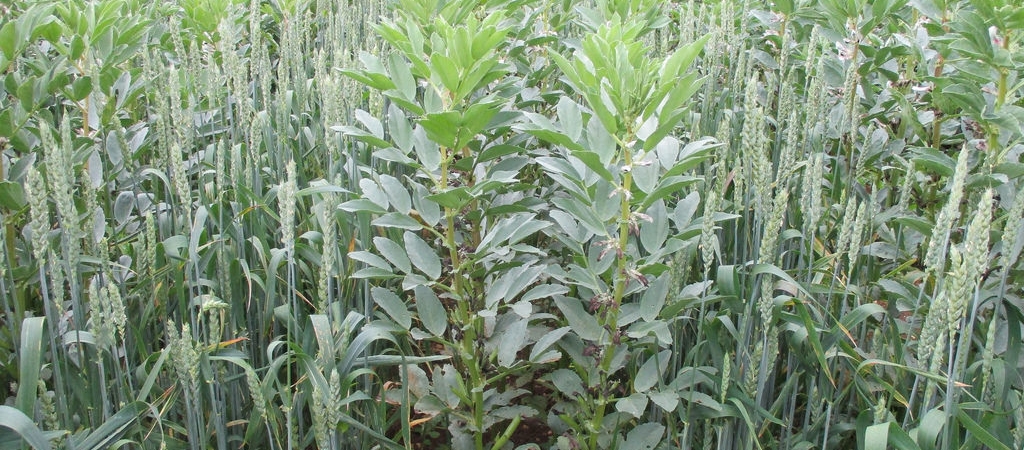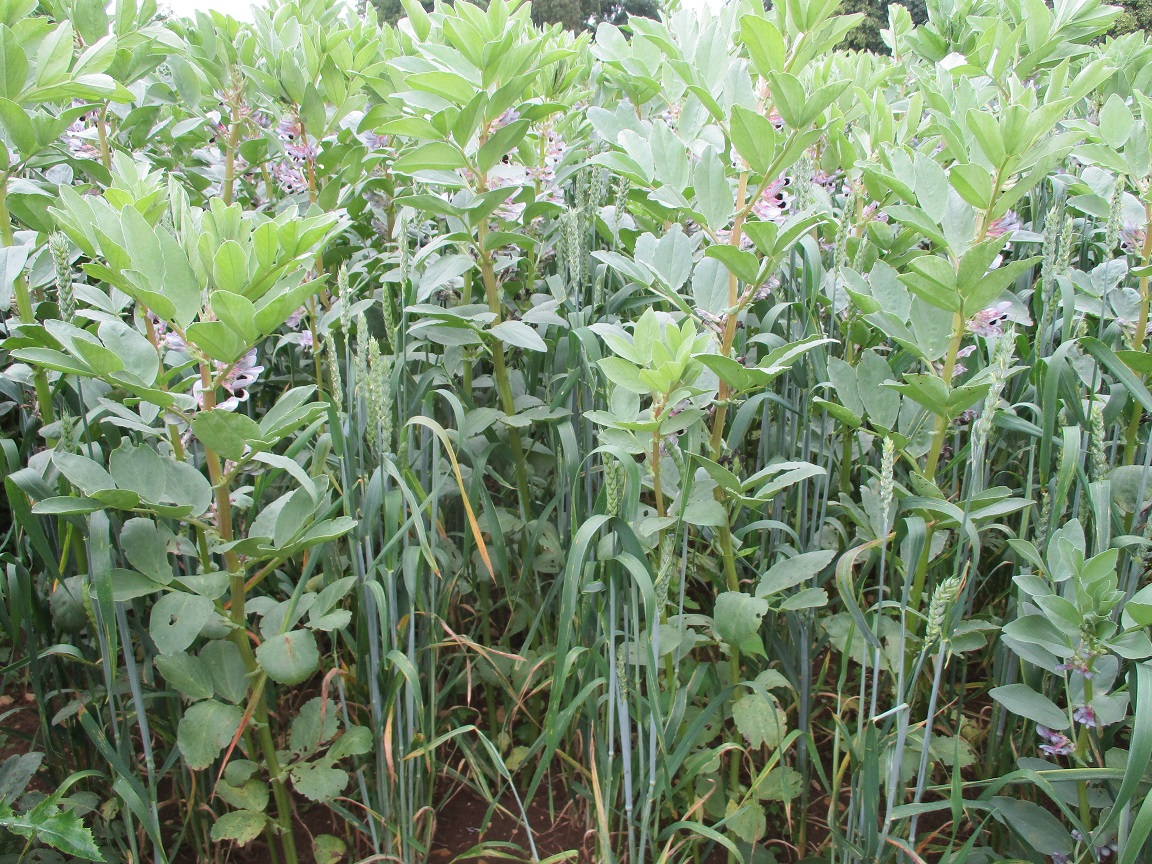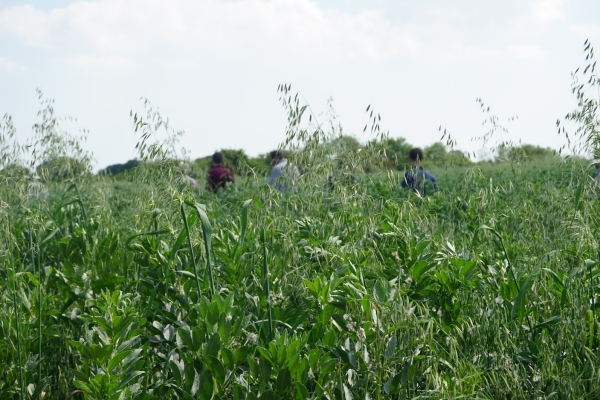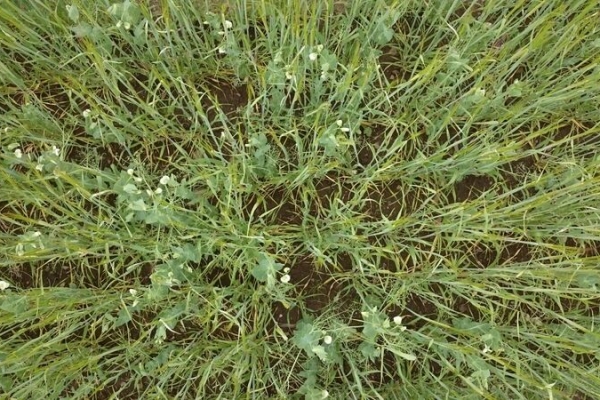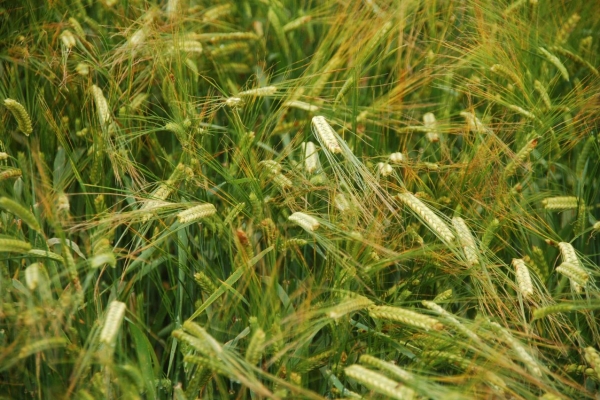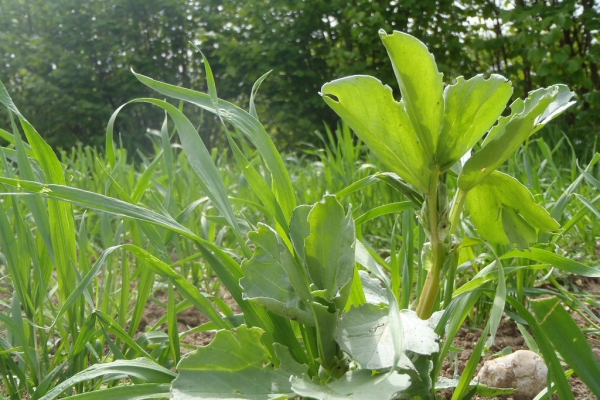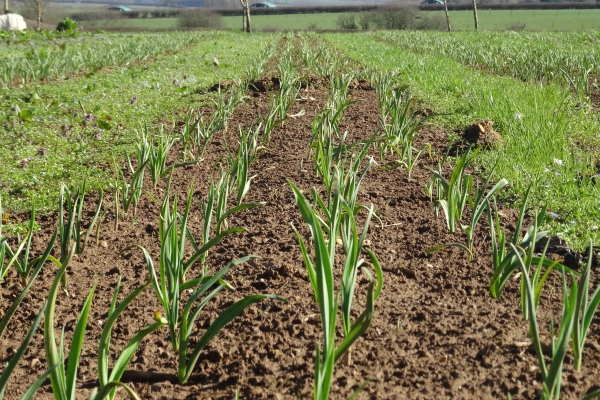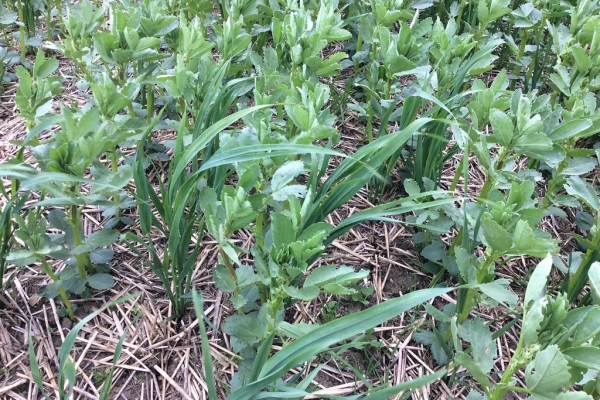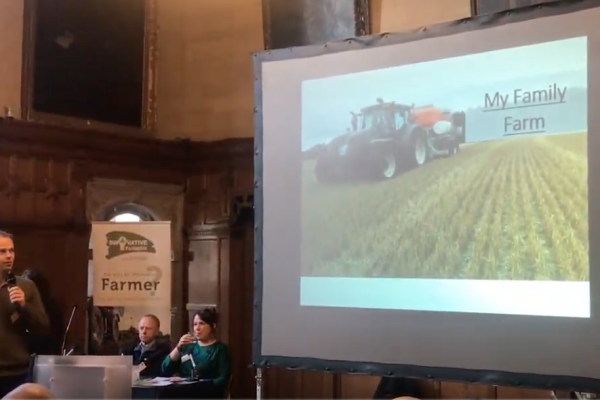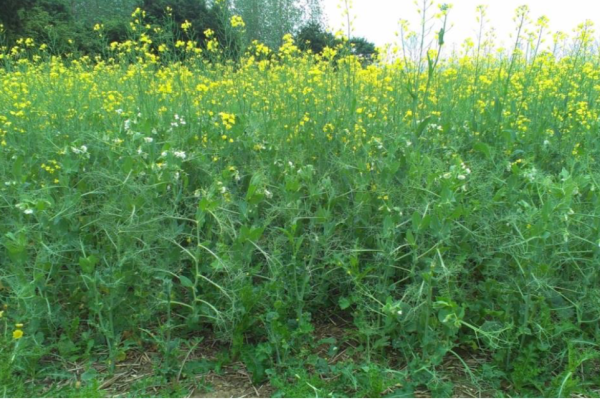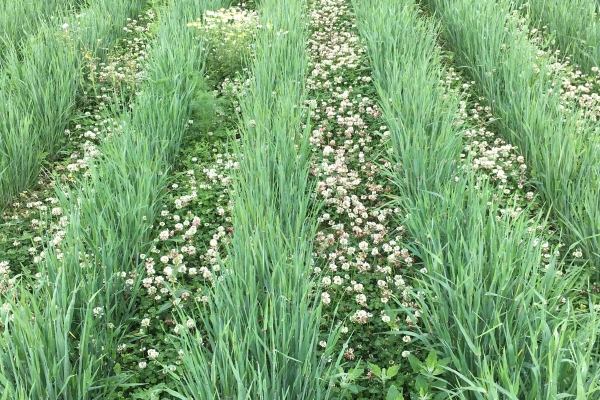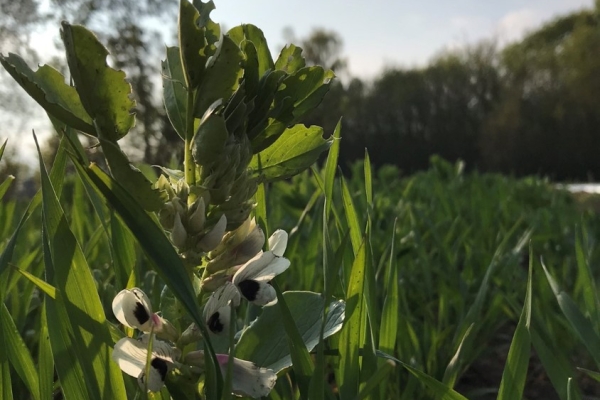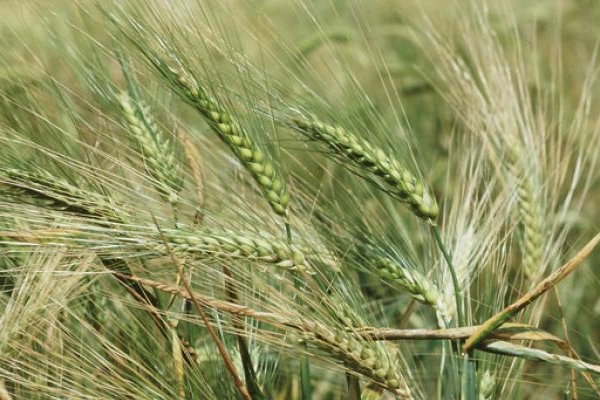Bi-cropping spring field bean (Vicia faba) and wheat (Triticum aestivum)
for UK whole crop forage production
Resource explained
Cereals are known to contain a high level of carbohydrate, but a lower crude protein level limits their suitability as whole crop forage when grown as a monoculture. Bi-cropping can provide a more nutritionally-balanced forage, but crop species and how they are arranged spatially is important. A study conducted at the Royal Agricultural University (RAU) in spring 2015 explored the effects of spatial arrangements of bi-crop mixtures of wheat and beans with different growth characteristics on resource use efficiency and forage quality. 4 drilling patterns incorporating 2 bean cultivars (Fuego and Maris Bead) and sole and bi-crops of the wheat variety Paragon were trialled.
Findings & recommendations
- When compared to mono-cropping, bi-cropping can help you maximise on the use of natural resources such as light, water, and nutrients, whilst also boosting forage dry matter and nutritional values.
The results showed that:
- Crops grown in the 2 rows of wheat to 2 rows of beans alternate row arrangement performed better than broadcast or sole wheat, indicating the mutual benefits that can come from combining species.
- Bi-cropping outperformed sole wheat cropping in relation to chlorophyll content, the ability to catch light, and wheat grain and whole crop wheat forage crude protein (CP) levels.
- Light and chlorophyll is used more effectively in a bi-crop mixture (particularly alternate rows of bi-cropping) than a sole wheat crop.
- The bean cultivars influenced CP more than the drilling patterns.
- The cultivar Maris Bead consistently outperformed Fuego in relation to bean grain CP and whole crop bean CP.
- The bean cultivars had an equal influence on the chlorophyll content, wheat grain CP and whole crop wheat CP.
- Fuego bean cultivar intercepted more light than the Maris Bead bean.
(Image above shows 1 x 1 spatial arrangement; 1 row of wheat, then 1 row of beans. Header image: 2 rows of wheat followed by 2 rows of beans. Photo credits: RAU)
